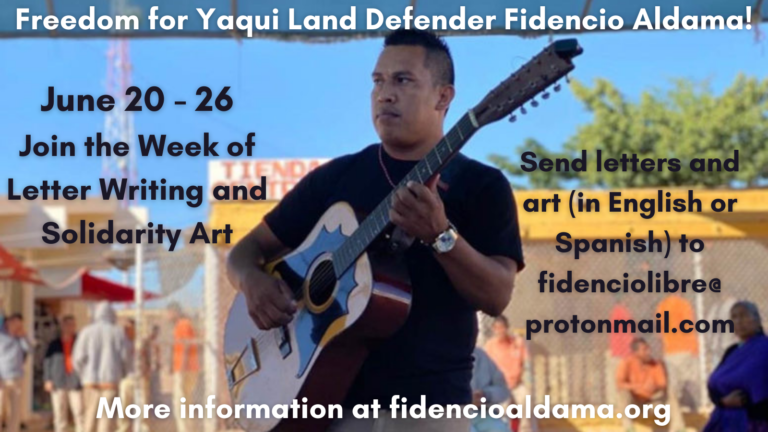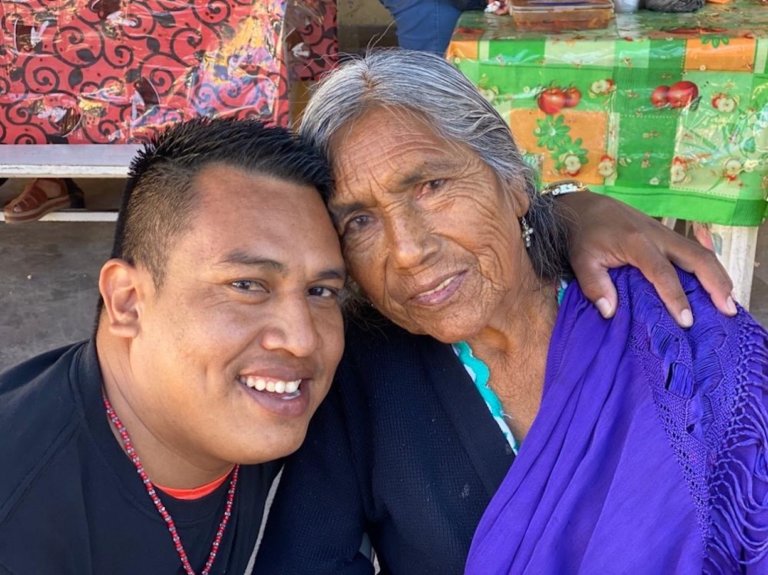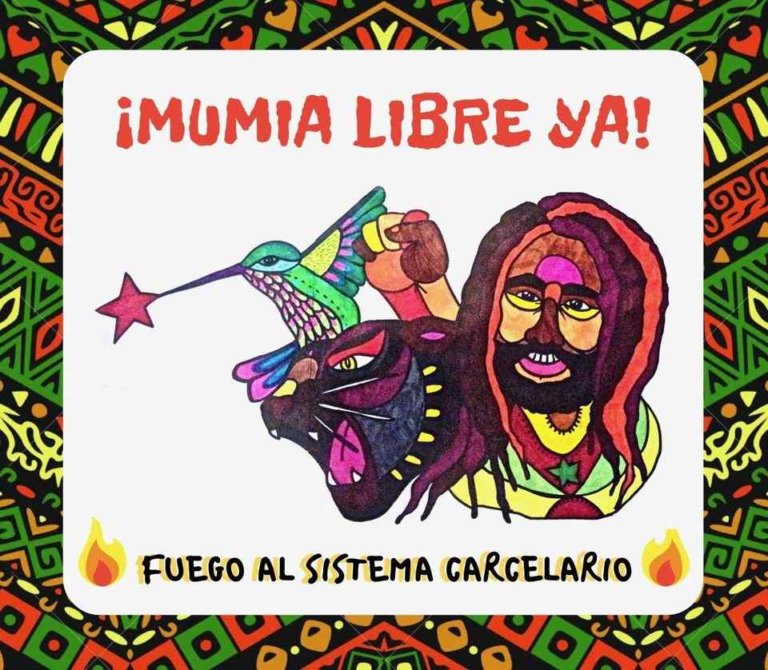November 25th, 2006 – Xochitl writes: Greetings friends,
Today was a Mega March for APPO and the people of the state of Oaxaca. Just days ago the state governor, Ulises Ruiz Ortiz (URO) stated that the problems in Oaxaca had been solved, and that there was no further violence or conflict.
Well, he can’t say that anymore.
The march began outside the city of Oaxaca, at the governor’s palace, Tens of thousands of people marched, representing groups from communists to indigenous groups to anarchists to the teachers union. They marched and chanted, carrying banners demanding the departure of URO, the PFP (policia federal preventiva, the federal police), as well as economic and social justice for the poor and indigenous communities of the state.
The march felt like a combination of public outcry and celebration. Food vendors passed through, as well as people selling hats to protect from the sun. Up ahead of the parade groups of people waited to cheer the march on, and offer their own political demands, written on posters and yelled to the crowd passing by. Although there were concerns about violence from URO supporters (called PRI-istas here, for the PRI political party), there was no sign of them as far as I could see.
After 3 hours of marching in the heat, the protest arrived at the central district of Oaxaca. They planned to encircle the zocalo, and then trap the PFPs inside the zocalo for 2 days. As I have mentioned before, the PFP stay mostly in the zocalo area, except for late-night forays into the surrounding town, to pick off members of the APPO leadership, taking them from their houses. The march was expressly peaceful, and APPO had arranged to have members of their leadership interspersed within the crowd, to try and maintain a peaceful, yet demanding, tone.
Before the march arrived at the center district, the zocalo scene seemed to be oddly quiet(at least as normal as it can be with police everywhere). PFPs were wandering around, without seeming too tense. Several of the entrances were blocked off with spider-webs of barbed wire, but some were open and people were allowed to pass, although many had their bags searched when they passed the flanks of PFPs. Almost all of the stores and restaurants that are along the edges of the zocalo were closed, but one restaurant was open. We asked one of the waiters whether they planned to stay open. “We’ll see,” he said, “depends on what happens. If things get bad, we’ll close. If not, then we’ll stay open.”
The ever-present vendors were still active in the zocalo, selling everything from gum to cigarettes to slingshots. We saw a group of PFPs testing out the slingshots.
At one point I passed out of the zocalo to do an errand, and couldn’t get back in. Many of the zocalo entrances were closed, but I finally found one that was open. The PFP warned me “There’s a march coming, and when they arrive, no one can go in or out of the zocalo. You will be trapped inside.” I went into the zocalo, where there were still men shining shoes and people sitting on benches, and we quickly left the area to find the march.
We could see crowds of people about 2 blocks away, passing by, but not approaching the zocalo. Rather than coming direct to the zocalo, the march went entirely around it, about 2 blocks from the PFP installations. Although we couldn’t actually see whether they managed to completely surround the area, I suspect that the march was large enough that the front met the end, resulting in a moving barricade of people.
Everything was calm for a while after that. There were many people on the streets, clustered at each of the zocalo entrances, but certainly not the tens of thousands we saw marching. We were told that, after the march, people had gone to eat and rest before confronting the police once again.
About 1 hour later we started to hear the all-too-familiar pop pop pop and boom booms of tear gas (and what else?) being shot off, and we headed in that direction. We could smell the gas, and our eyes began to burn and tear. We turned the corner, and there was billowing gas and police shooting off more gas in the direction of Santo Domingo. My friends, who are reporters, stayed in that area while I headed to Santo Domingo to see if I could observe the medical and first aid teams in action.
When I arrived at the corner where the protesters were clustered, I found brigades of first aid workers soaking face masks in vinegar, then running through the crowd offering them to everyone. People were running towards the center of conflict with bottles of coke, the favorite remedy for tear gas. I saw one person offer a man water to wash out their eyes, and he said, is it coke? When the first aid worker said no, he said no! and turned away.
I then moved towards the first aid station, and on the way I saw people pounding large pieces of concrete against the ground, so they would be a useful size for slingshots. Teams of mean, carrying large sacks filled with rocks, ran through the crowd towards the front of the conflict. And through it all people ran forward with bags and bags filled with bottles of coca-cola.
I arrived at the first aid station, and said I wanted to observe the medical care. Within 5 minutes of arriving I was asked for my medical credentials, was asked my name, blood type, and emergency contact information, given a sticker to put on my shirt with all this information, and assigned to a medical team working inside the first aid station.
I watched as they prepared more “cubrebocas,” mouth coverings. They took a piece of cloth, placed a maxipad inside, then folded the cloth over and tied it off with long thin pieces of cloth to secure the masks to a person’s head. Each of these was soaked in vinegar, then brought out to the crowds.
As each injured person entered the first aid station they were registered, while simultaneously receiving their initial medical care. Some were given shots of antibiotics or anti-inflammatory medicines, while others got stitches. We saw multiple serious lacerations from tear gas canisters and rocks, one man with broken ribs and a possible punctured lung, one broken nose from a direct hit of a tear gas canister, and multiple serious burns, one third degree (full thickness). The man with the full thickness burn was desperately afraid of an injection to help with the pain, but with an ace bandage in his mouth, so he could bite down on it, and several people helping, they managed to give him both a injection for the pain and local anesthetic for the debridement (cleaning) of his burn.
For a while the first aid station was surrounded by police, and our eyes burned with the gas. The staff passed out cubrebocas to all the staff there, as well as the patients.
After hours, when things had calmed down a bit and the PFP had returned to the zocalo, I left the first aid station. There were still groups of people wandering around the streets littered with broken glass, pieces of wood, and rocks.
So, URO can no longer say that the problem of Oaxaca has been taken care of.
Please hold the people of Oaxaca, and all those struggling for justice, in your hearts.
Cuidense,
Xochitl


